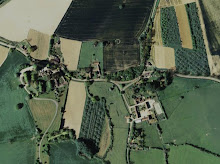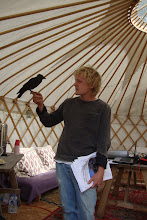
An example of a 'rot hole'. Great habitat for saproxylic invertebrates including the Noble Chafer, Gnorimus nobilis (a UK BAP species) and many species of fungi . And snails.
.jpg)
An example of what I would call a 'cavity'. It is more of an internal space than a 'rot hole' and often forms where a hollow limb or trunk is accessible through a hole in the bark. Good habitat for a range of cavity nesting birds and bats. You can see some fungal hyphae hanging down inside this cavity- it is in one of the oldest trees and has an entirely hollow trunk, along with several hollow limbs.

Out of a total of 34 healthy and 8 decrepit trees in the 1940s orchard, I found a total of 77 rot holes and cavities (thumbnails above). The average trunk circumference was 160 cm, measured below the lowest branch, illustrating the considerable size of trees in this orchard.

Out of a total of 50 healthy and 3 decrepit trees in the 1920s orchard I found a total of 164 rot holes and cavities. The average circumference was smaller though, at 143 cm. I think the reason this orchard has a greater density of ancient tree features than the one planted in the 1940s is due to the trees being older on average, as well as perhaps having been pruned more intensively being half-standard trees. More veteran tree features = more unusual habitat.

A resident of tree 28, 1920s orchard.



Great shot !...
ReplyDeleteVery Nice !...
Ciao from Italy :)
Gooooooooooooooood
ReplyDeleteThank you
The subject of more than wonderful